Blue Tongue Skink Care Sheet
Blue Tongue Skink (Tiliqua spp.) Care Sheet
Reviewed by Joshua Rodriguez, Owner of Modern Reptile
Last Updated: June 2025
Quick Reference Guide
| Parameter | T. scincoides (Northern/Eastern/IJ) | T. gigas spp. (Indo/Merauke/Halmahera) |
|---|---|---|
| Basking Temp | 100–110°F | 95–100°F |
| Cool Side Temp | 70–80°F | 75–80°F |
| Ambient Temp | 80–85°F | 80–85°F |
| Humidity | 50–60% | 60–80% |
| Nighttime Drop | 65-70°F | Maintain above 70°F for tropical types |
| Enclosure Size | 4x2x2 minimum | 4x2x2 minimum |
| Diet | Omnivorous | Omnivorous |
Ethical Stewardship & Long-Term Commitment
-
Northern BTS are ideal for beginners: bold, forgiving of husbandry errors, captive-bred commonly
-
Indonesian species (Merauke, Halmahera, Classic Indo) are less tolerant of poor care and are usually wild-caught
-
Expect to commit for 15–30 years
-
Always verify locale from breeders, misidentified skinks are common
Species / Locality Overview & Comparison Chart
| Species / Locale | Common Name | Origin | Size (in) | Captive Suitability | General Visual Differences | Temperament |
|---|---|---|---|---|---|---|
| T. s. intermedia | Northern BTS | Northern Australia | 18–24 | Excellent (CB common) | Bright gold/tan base, light orange bands (Depending on line bred traits). Broad triangular head. | Docile/Hardy |
| T. s. scincoides | Eastern BTS | Eastern Australia | 15–20 | Uncommon (Less CB in USA) | Cool silver/grey base, crisp black bands, less bulky than Northerns and usually smaller. Visual cues dependent on locale. | Docile/Hardy |
| T. sp | IJ (Irian Jaya) BTS | Papua New Guinea | 18–24 | Uncommon (Less CB in USA, more WC available) | Colorful bands over a tan base. Usually looks like the middle ground between Australian and Indo species. | Fairly Docile/Hardy |
| T. s. chimaera | Tanimbar BTS | Tanimbar Islands, Indonesia | 16–20 | Difficult (WC mainly) | Metallic silver or yellow sheen, reduced or absent banding, slender body, fast-moving, smaller head | Less Docile/ Fairly Hardy |
| T. gigas gigas | Classic Indonesian BTS | Indonesia (mainland) | 18–22 | Rare (Most common WC available) | Earthy brown base, dark limbs, narrow head, reddish eyes possible, variable band clarity | Less Docile/ Hardy |
| T. gigas | Halmahera BTS | Halmahera Island, Indonesia | 20–26 | Rare (Most common WC available) | Stark brown base, dark black blotchy limbs, narrow head. | Less Docile/ Hardy |
| T. gigas keyensis | Kei Island BTS | Kei Islands, Indonesia | 16–20 | Difficult (WC mainly) | Gold-olive or orange-red base with soft, faint bands, often misidentified as Indo-type; subtle and very rare | Less Docile/ Hardy |
|
T. gigas evanescens |
Merauke BTS | Papua/Western Indonesia | 22–28 | Moderate (some CB) | Longest tail-to-body ratio, thin clean bands, tan/light brown body, calmest Indo-type, can have narrower face | Fairly Docile/Hardy |
| T. multifasciata | Centralian BTS | Papua New Guinea | 15–18 | Extremely Rare | Orange/Gold coloration and plump bodies | n/a |
| T. nigrolutea | Blotched BTS | Tasmania / SE Australia | 16–22 |
Extremely Rare |
Black or dark brown body, large irregular blotches, sometimes pink/peach belly, cold-adapted | n/a |
| T. adelaidensis | Pygmy Blue Tongue | South Australia (arid) | ~8 | Unverified | Very small, copper-bronze color, short stubby tail, long narrow face, critically endangered | n/a |
| T. occipitalis | Western Blue Tongue | Western Australia | 17–20 | Extremely Rare | Tan-to-sandy base, stark banding | n/a |
| T. rugosa rugosa | Shingleback (Bobtail) | SW Australia | 16–18 | Extremely Rare | Heavy armor-like scales, very short blunt tail, dark bands | n/a |
| T. rugosa asper | Eastern Shingleback | Eastern Australia | 14–16 | Extremely Rare | Similar to rugosa, less contrast, more uniform in color | n/a |
| T. rugosa konowi | Rottnest Island Shingleback | Rottnest Island (AUS) | 10–14 | Unverified | Smallest rugosa form | n/a |
Temperature Gradient & Heating
| Locale | Basking Temp | Notes |
|---|---|---|
| Most T. scincoides | 100–110°F | Tolerates warmer basking, benefits from night drop |
| Most T. gigas | 95–100°F | Needs stable ambient temp with mild night drop |
Use overhead heating bulb or DHP for basking
Humidity & Ventilation
| Locale | Humidity Range | Notes |
|---|---|---|
| Most T. scincoides | 50–60% | Moderate airflow, drier substrate preferred to avoid blisters |
| Most T. gigas | 60–70% | Deep mulch, moderate misting, ventilation essential (to avoid mold) |
- Use hygrometers with dual probes (ambient and substrate-level).
- Avoid sealed glass tanks without proper airflow.
Enclosure Sizing & Habitat Design
| Age/Size | Enclosure Size (All Locales) | Notes |
|---|---|---|
| Baby- Juvenile | 36x18x18” | Temporary only, you can start them off in their adult enclosure if needed as long as they are eating and drinking normally. |
| Adult | 48x24x24” minimum | They will utilize all the space given, you can give them more horizontal land. |
Interior Setup by Locale
| Style | Northerns | Indo/Merauke/Halmahera |
|---|---|---|
| Minimalist | Paper liner, 2 hides, water & food bowl | Add moss box or moist hide |
| Naturalistic | Cypress, coco, bark, driftwood, hides | Use deeper mulch, cover to maintain humidity |
| Bioactive | Loose ABG, live plants (low RH) | High drainage, sphagnum zones, large plant coverage |
Always include:
-
Multiple hides
-
Water dish
-
At least 3” of diggable substrate
-
Climbing material or basking platforms
Bioactive Setup Guide for BTS
Suitable for:
-
Captive-bred BTS
-
Avoid with recent imports or WC Indonesian skinks until fully acclimated, free from parasites, and dewormed
Supplies Needed:
-
Enclosure: 4x2x2 w/ top airflow
-
Drainage Layer: LECA or gravel + mesh separator
-
Substrate Base: ABG mix or Forest Floor blend (topsoil, coco, orchid bark)
-
Leaf Litter: Magnolia or oak leaves, 2–3” depth
-
Clean-Up Crew: Springtails + Isopods (avoid larger isopods that may irritate)
-
Live Plants: Snake plant, Pothos, Ficus
-
Lighting: Full-spectrum LED + low-output UVB (Arcadia ShadeDweller or 6% T5)
Management Tips:
-
Spot-clean feces daily
-
Stir soil lightly weekly
-
Replace leaf litter monthly
-
Monitor RH with a digital hygrometer (humidity at substrate level can differ from ambient)
Diet by Life Stage
| Age/Stage | Protein Ratio | Veg Ratio | Fruit | Notes |
|---|---|---|---|---|
| Hatchling | 60% | 30% | 10% | Feed daily |
| Juvenile | 50% | 40% | 10% | Feed every other day |
| Adult | 30–40% | 50% | 10–20% | Feed 2–3x/week |
Notes:
These "%"'s are variable and averages. In our care we primarily feed the following:
- High quality grain free wet dog food (as a base)
- Mazuri Insectivore Diet
- Mazuri Herbivore Diet
- Leafy greens (Arugula, Collard Greens, Turnip Greens, Romaine Lettuce)
- Other Veggies (Carrots, squash)
- Fruit (Bluberry, Strawberry)
- Uncooked Egg (with cracked shell)
- Supplements (Calcium, Multivitamin)
Track weight monthly and adjust calories based on energy level and growth.
Common Feeding Issues
| Issue | Fix |
|---|---|
| Refuses food | May not be used to what you are offering, speak to the seller for their diet input and adjust |
| Lethargic after meal | Might be from overfeeding, give them less food or more days inbetween meals |
| Undereating | Check husbandry, animal be stressed, check for infection |
Behavior, Intelligence & Handling
Normal Skink Behavior:
| Behavior | Meaning |
|---|---|
| Hissing, puffing | Startled, back off |
| Tongue flicking | Scent investigation |
| Head bobbing | Territorial or courtship behavior |
| Sudden hiding | Normal post-exploration |
Choice-Based Handling
-
Open enclosure, allow approach
-
Use feeding tongs to desensitize
-
Avoid frequent handling with WC Indonesians
Indos are shyer, less tolerant of handling
Aussies are bold and tolerate frequent short sessions
Human Bond & Cognition
-
Blue tongues are limbic-driven, meaning they recognize patterns, not emotion
-
They do not bond like mammals, but they are more personable than bearded dragons making them a more interactive and intuitive pet.
-
Can learn feeding time, tolerate familiar routines
Avoid anthropomorphism:
-
Affection = comfort, not emotional attachment
-
Hiding is not “being mad”, it’s instinct
Color Morphs, Lineages, & Ethical Breeding
Most color and pattern variations of CB Blue Tongue Skinks are Northerns that are "Line-Bred". This technique describes polygenic traits, like high orange coloration and aberrant patterning, that are bred with similar animals to hold on and increase these traits through generations. Actual Morphs (i.e. recessive, incomplete/complete dominants) in the United States are very rare, but over the last few years they are becoming more popular. Though their price point is high and availability is sparse, they provide. a great opportunity for breeders to stronghold a potential micro-industry for blue tongue skinks. And as popularity rises, they will truly shine as the best pet lizard.
Common “Morphs” by Type:
| Morph/Trait | Type | Characteristic | Species/Locale |
|---|---|---|---|
| Fuego | Line-bred | Stark red coloration with black contrasting bands. Built by combining different "Red-Line" animals with "Sunrise"/"Sunset" and "Magma" genetics. | Northern |
| Albino | Recessive | Lack or reduced production of melanin, the pigment that gives yellow/white appearance and red eyes | Eastern |
| Anery | Recessive | Removes the red pigment, resulting in a gray and black animal | Northern |
| Axanthic | Recessive | Primarily removes the yellow pigment, resulting in a gray and black animal | Halmahera |
| Black & Gray | Line-bred | Increased black contrast with minimal color appearing "gray" | Northern |
| Bubblegum | n/a | Hypomelanistic looking animal with variable coloration | IJ |
| Dark | Line-bred | Increased black pigment throughout the banding | Northern |
| Halloween | Line-bred | Similar to Dark lines but has increased coloration of yellow/orange in between banding | Northern |
| Ivory/White | Recessive | Pale white, sometimes has yellow pattern on back | Northern |
| Kit-Kat | Incomplete Dominant | Vertical banding that intersects horizontal bands appearing aberrant | Northern |
| Magma | Line-bred | High orange/red coloration that is much brighter than Red line animals | Northern |
| Melanistic (Hypermelanistic) | Recessive | Completely melanistic animal that sometimes has orange "flames" that come up from the sides of the animal | Eastern |
| Neely Patternless | n/a | Variable patternless | Merauke |
| Orange | Line-bred | Higher expression of orange pigment | Northern |
| Orange crush | Line-bred | Bright orange with bands almost appearing hypomelanistic | Northern |
| Patternless/Toffee | Recessive | Removes banding from pattern | Northern |
| Pitch Black | Line-bred | Extreme high expression of melanistic pigmentation and increases as the animal ages | Northern |
| Red | Line-bred | Higher expression of red pigments | Northern |
| Sunrise | Line-bred | Higher yellow coloration | Northern |
| Sunset | Line-bred | Higher orange coloration | Northern |
| Swedish | Line-bred | Both colorful and with great contrast that helps animals keep color as they age | Northern |
| Turner White | Line-bred | These animals start a "classic" coloration and become more white as they age, sometimes becoming almost completely color and patternless | Northern |
| Yellow | Line-bred | Higher yellow coloration | Northern |
Ethics:
-
Aim to breed documented animals from reputable breeders
-
Hybriding without disclosure is frowned upon
-
Avoid breeding closely related animals
Breeding Practices
| Step | Best Practice Notes |
|---|---|
| Season | |
| Mating | |
| Gestation | |
| Litter Size |
COMING SOON
Biosecurity: Crypto, Mites, Quarantine
Crypto (Cryptosporidium)
-
Potentially fatal and incurable
-
Causes regurgitation, weight loss, lethargy
-
No treatment: euthanasia often required
Quarantine Protocol:
-
90–120 days
-
Dedicated tools per enclosure
-
Daily fecal checks recommended in collections
Mites & External Parasites:
-
More common in Indonesian imports
-
Use paper substrate + dark hides during quarantine
-
Treatment protocol coming soon..
Common Health Issues
| Ailment | Symptoms | Solution |
|---|---|---|
| URI | Clicking, mucous, open-mouth breathing | Raise temps, vet antibiotics |
| MBD | Weak limbs, tremors, curved spine | Calcium + D3, proper basking temps |
| Mouth Rot (Stomatitis) | Swollen gums, pus | Vet treatment, improve enclosure hygiene |
| Impaction | Lethargy, bloating, no feces | Soak, hydrate, adjust substrate |
Myth vs. Fact
| Myth | Reality |
|---|---|
| All blue tongues are the same | Regional species have different care needs |
| They can live in a 40 gal forever | Adult skinks need 4x2 ft+ |
| You can cohab blue tongues | They are primarily solitary and territorial. Can be done in rare occasions when keeping outdoors and/or in naturalistic enclosures. But, still not recommended unless you are an "advanced" keeper. |
Supplies You’ll Need
Heating & Monitoring
-
Heat producing bulb/DHP bulb
-
Dimming thermostat *optional
-
Infrared temp gun
-
Dual digital thermometers/hygrometers
Enclosure & Substrate
-
4x2x2 PVC or wood enclosure
-
Cypress/coco mulch, ABG mix, or Reptichip
-
Drainage layer + leaf litter (bioactive)
Feeding & Supplements
-
Tongs or scoop
-
Stainless steel bowl
-
Calcium with D3 (Repashy, Arcadia)
-
Access to insects, veggies, pellet diets, fruit, high quality wet dog food
*Check back here for future updates! Our care is always changing and growing. As new resources and knowledge becomes available we plan on updating this sheet with new info as available.
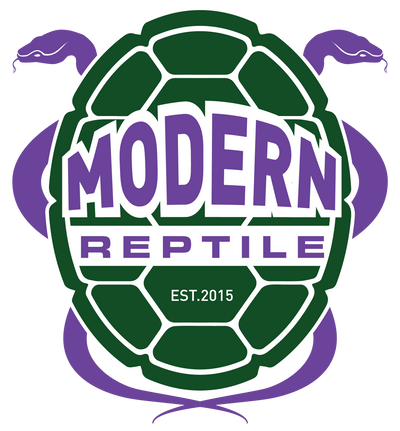
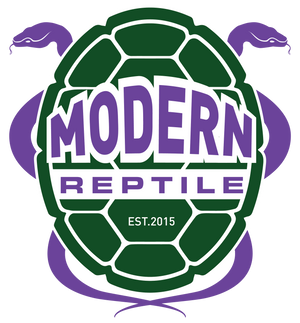
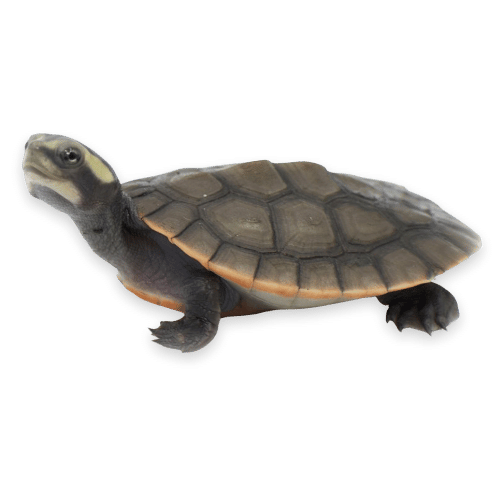
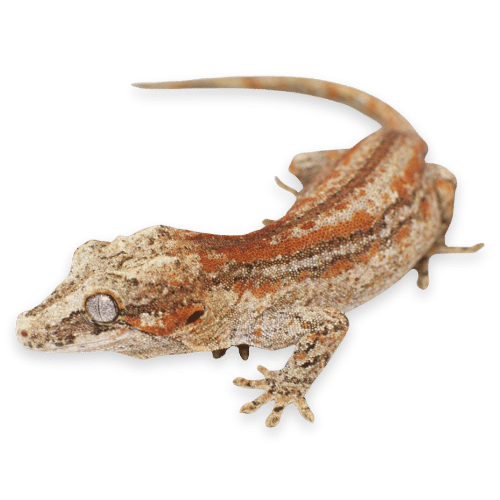
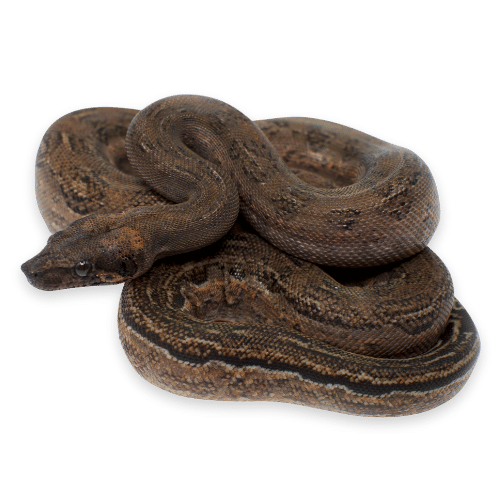
Leave a comment